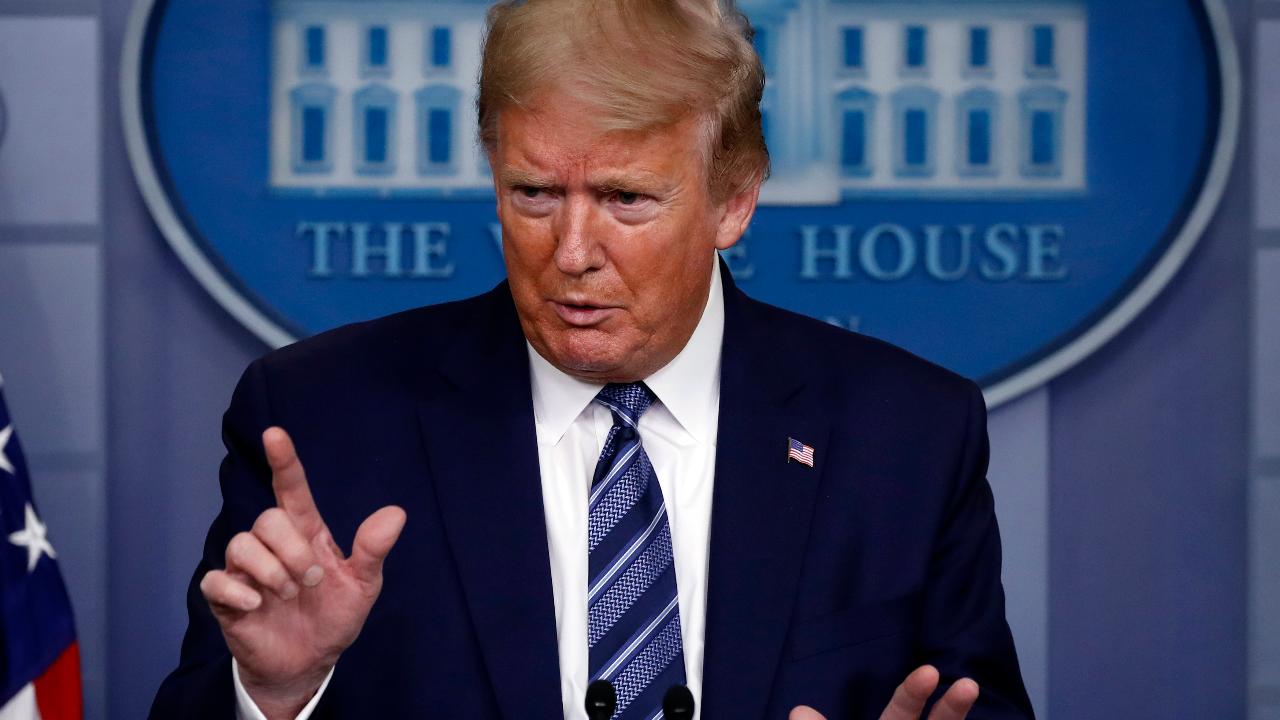Harvard is the richest university in the US - why did it receive $9M in taxpayer aid?
Among the Ivy League universities, Harvard’s aid package was the third-largest
Get all the latest news on coronavirus and more delivered daily to your inbox. Sign up here.
Harvard pushed back against President Trump’s demand that the university, the wealthiest in the country, return $8.7 million it received in taxpayer aid through the massive economic-relief package signed into law last month.
“Harvard should give back the money now. Their whole ‘endowment’ system should be looked at!” Trump tweeted late Tuesday night, after slamming the university during the daily White House press conference.
With an endowment of nearly $41 billion, the largest in the U.S., Harvard has become a lightning rod for criticism after it received $8.7 million under the Higher Education Emergency Relief Fund. At least half of the money must be reserved for emergency financial grants to students impacted by the coronavirus pandemic. In addition to helping cover tuition, the money could be spent on extra technology, food and housing costs. Although the remaining balance can go toward costs incurred by universities, Harvard said it will use 100 percent of the funds to provide direct assistance to students.
“Harvard has committed that 100% of these emergency higher education funds will be used to provide direct assistance to students facing urgent financial needs due to the COVID-19 pandemic,” the university said in a statement.
The $2.2 trillion economic relief package that Trump signed into law at the end of March included $14 billion for higher education, as colleges and universities across the nation have closed their doors and shifted to online learning to contain the virus. Recipients of the aid ranged from Ivy League universities to beauty schools.
The money is allocated based on the number of full-time Pell Grant recipients and total in-person enrollment before the switch to online classes.
Harvard, including its business, law, medical and other graduate schools, has about 24,000 students. Its undergraduate enrollment is 6,700. Sixteen percent of Harvard students are recipients of Pell Grants, a federal aid program for low-income college students.
JPMORGAN'S SMALL BUSINESS RELIEF GIVES MILLIONS TO BIG RESTAURANT CHAINS, PROMPTING BACKLASH
Among the Ivy League universities, Harvard’s aid package was the third-largest: Columbia University and Cornell University will receive the most financial help at $12.8 million apiece. The eight Ivy League universities -- with a combined endowment of more than $140 billion -- are set to receive nearly $60 million in taxpayer aid. The universities receiving the most money through the CARES Act are public universities, with Arizona State University set to receive the biggest grant at $63 million.
During an interview with FOX Business, Treasury Secretary Steven Mnuchin said he spoke with Harvard President Lawrence Bacow on Wednesday morning about the aid it received. Mnuchin said the university was “thinking seriously” about whether to keep the money or “give it to other institutions that need it.”
“Harvard has not applied for or received any funds from the Higher Education Emergency Relief Fund,” spokesperson Jason Newton said in a statement on Wednesday. “We continue to review the additional guidance from the Department of Education related to the Fund and will make a determination as to whether we will seek to access the allocation that was made to Harvard by statute.”
BURGER KING FRANCHISE OWNER WITH OVER 1,000 STORES MAY APPLY FOR SMALL BUSINESS LOAN
A Harvard spokesperson told Forbes there are certain restrictions on how the university can spend the $41 billion endowment money. The endowment consists of more than 13,000 separate funds, many of which are restricted to spending designated by donors, like professorships and scholarships.

In this Dec. 13, 2018, file photo, a gate opens to the Harvard University campus in Cambridge, Mass. (AP Photo/Charles Krupa, File)
In an interview with the Harvard Crimson, Harvard CFO Thomas Hollister said the endowment has likely declined “substantially” as the virus outbreak sends stock markets around the world into freefall. One estimate in Harvard Magazine last month theorized the value of the endowment had dropped to the “mid-30 billion range.”
“Harvard aims — similar to other universities and colleges — to distribute about 5 percent of the market value of the endowment every year,” Hollister said.
Still, about one-third of Harvard’s operating budget stems from an annual disbursement; last year, that totaled $1.9 billion.
Last week, Harvard announced that it would freeze salaries, forgo new hires, cancel discretionary spending, delay some capital projects and cut pay for its top administrators. Officials also said they are considering layoffs or furloughs, but have made no official decisions.
"Harvard, like other universities around the world, will not be spared the economic consequences of the pandemic,” Harvard’s top leaders said in a letter to the university community.
At the end of March, the university announced that it would provide its direct hires whose work is impacted by the pandemic with 30 days of paid leave and benefits. Facing mounting pressure from workers’ unions and student advocacy organizations, the university agreed to provide all of its employees with regular pay and benefits through May 28 after it announced plans to pay dining employees for just 30 days after their jobs were eliminated.
